Mastering the Basics of PHP Programming
PHP, which stands for Hypertext Preprocessor, is a widely used server-side scripting language designed for web development. It is particularly suitable for creating dynamic web pages and interacting with databases. In this comprehensive PHP tutorial, we will delve into the fundamentals of PHP programming, covering everything from basic syntax to advanced topics like object-oriented programming and security.
![]()
Introduction to PHP
What is PHP?
PHP is an open-source scripting language that is embedded in HTML. It was originally created by Danish-Canadian programmer Rasmus Lerdorf in 1994 and has since evolved into a powerful tool for web development. PHP scripts are executed on the server, generating dynamic content that is then sent to the client’s web browser.
Brief History of PHP
PHP has a rich history, with several major versions released over the years. Version 3, released in 1997, introduced many features that are still in use today, such as support for databases and cookies. Version 4, released in 2000, added support for object-oriented programming. Version 5, released in 2004, brought significant performance improvements and introduced the Zend Engine, a powerful scripting engine for PHP. The latest stable version, PHP 8, was released in November 2020, with numerous new features and improvements.
Setting Up PHP
Setting up PHP on your system is relatively straightforward. You can download the latest version of PHP from the official PHP website and follow the installation instructions for your operating system. Once PHP is installed, you may need to configure it to work with your web server, such as Apache or Nginx.
Basics of PHP
PHP syntax is similar to that of C, Java, and Perl, making it easy for programmers familiar with those languages to pick up PHP quickly. Here are some essential concepts to understand:
Syntax and Structure
PHP code is enclosed within <?php ?> tags when embedded in HTML. Statements end with a semicolon (;), and comments can be added using // for single-line comments or /* */ for multi-line comments.
Variables and Data Types
Variables in PHP start with the $ symbol and can store various data types, including strings, integers, floats, booleans, arrays, and objects.
Operators and Expressions
PHP supports a wide range of operators for performing arithmetic, comparison, logical, and assignment operations. Expressions are combinations of variables, constants, and operators that evaluate to a single value.
Control Structures
Control structures allow you to control the flow of execution in your PHP scripts. Common control structures include:
Conditional Statements
Conditional statements, such as if, else, and elseif, allow you to execute different blocks of code based on certain conditions.
Loops
Loops, such as for, while, and foreach, allow you to execute a block of code repeatedly until a certain condition is met.
Functions in PHP
Functions are reusable blocks of code that perform a specific task. In PHP, you can define your functions using the function keyword. Functions can accept arguments and return values.
PHP Arrays
Arrays are used to store multiple values in a single variable. PHP supports both indexed arrays and associative arrays, as well as multidimensional arrays.
Working with Forms
HTML forms are a common way for users to interact with web applications. In PHP, you can handle form submissions and process user input, including sanitizing and validating data to prevent security vulnerabilities.
PHP and Databases
PHP has built-in support for interacting with databases, such as MySQL, PostgreSQL, and SQLite. You can connect to databases, execute SQL queries, and fetch data using PHP’s database functions.
Object-Oriented PHP
Object-oriented programming (OOP) is a programming paradigm that focuses on objects and classes. In PHP, you can create classes and objects, as well as implement concepts like inheritance, encapsulation, and polymorphism.
Error Handling in PHP
Error handling is essential for debugging and maintaining PHP applications. PHP provides various error handling mechanisms, including error reporting levels and exception handling.
Working with Files in PHP
PHP allows you to read from and write to files on the server. You can use file handling functions to manipulate files, such as fopen(), fclose(), fread(), and fwrite().
Session Management
Sessions are used to store user data across multiple page requests. In PHP, you can start and destroy sessions, as well as store session variables that persist across requests.
PHP Security
Security is a critical aspect of web development. PHP provides several features and functions to help secure your applications, such as input validation, output escaping, and encryption.
PHP Frameworks
PHP frameworks provide a structured foundation for developing web applications. Popular PHP frameworks include Laravel, Symfony, and CodeIgniter, each offering features such as routing, templating, and database abstraction.
Advanced PHP Topics
Beyond the basics, there are many advanced topics to explore in PHP, such as namespaces, traits, and magic methods. These features can help you write more efficient and maintainable code.
Conclusion
Mastering PHP programming is essential for anyone interested in web development. By understanding the fundamentals of PHP and practicing with real-world projects, you can build dynamic and interactive web applications that delight users and solve complex problems.




